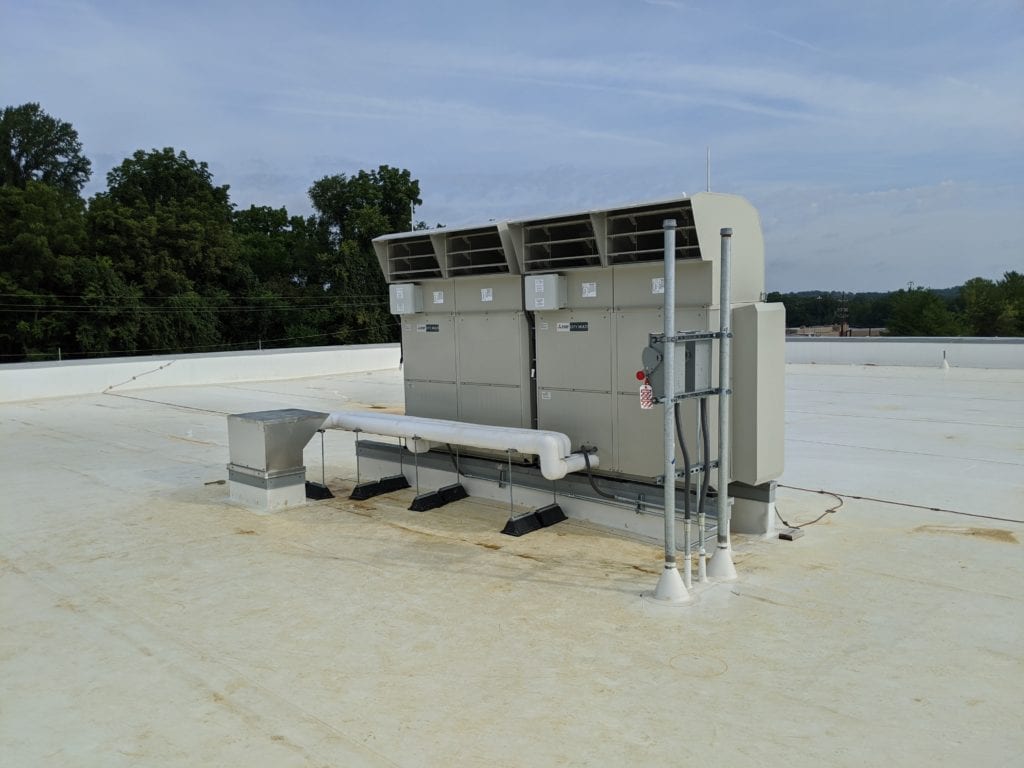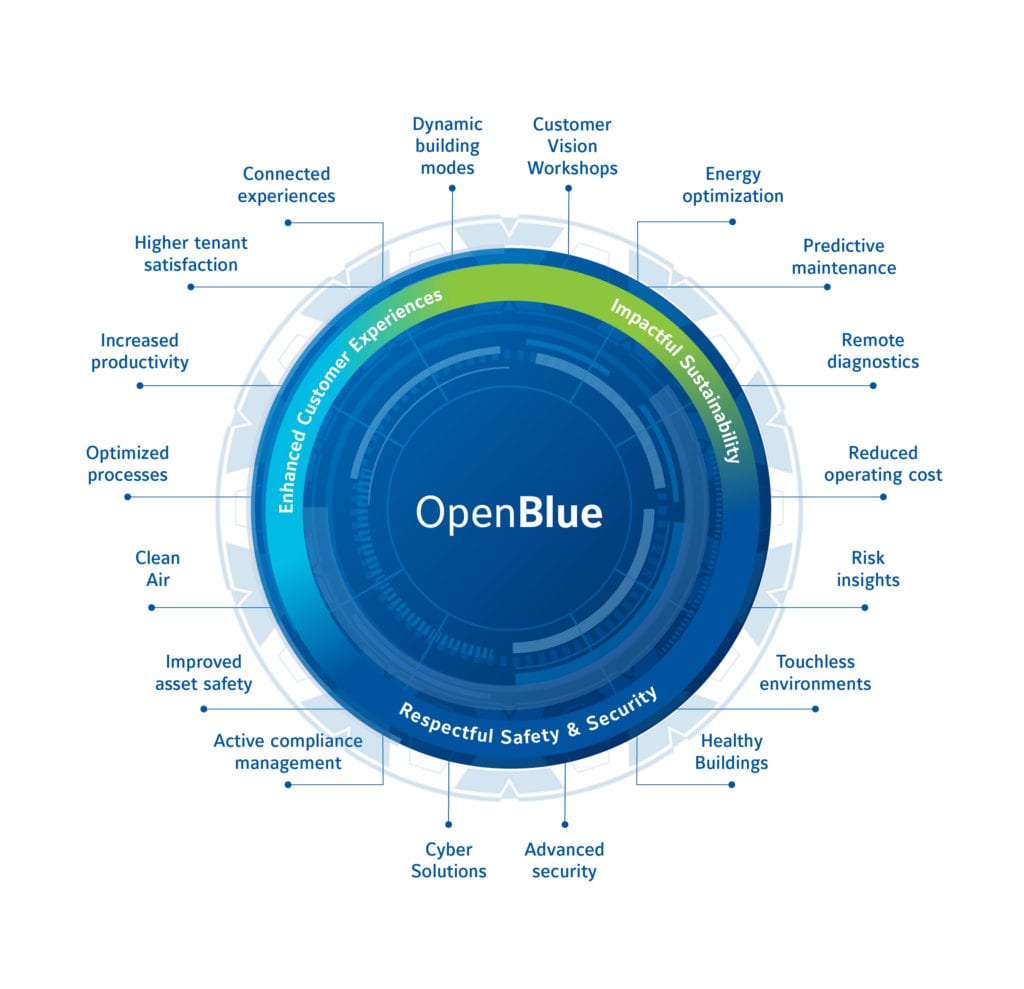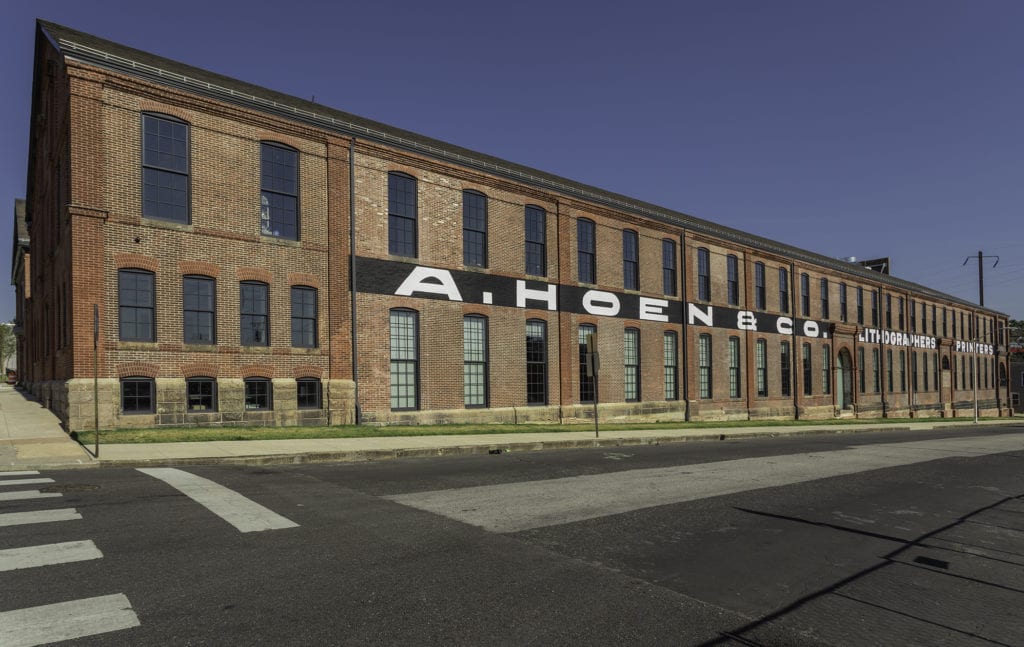Project teams face new goals and challenges to decarbonize buildings
On a tight corner lot in downtown Silver Spring, Design Collective, James Posey Associates and their project partners are working to pull off an uncommon construction feat: delivery of a net zero office building.

“A tall, skinny building in a highly urban environment normally doesn’t match up with net zero,” said Patrick Morgan, Project Manager at James Posey. But the eight-story, 81,000-square-foot building which will serve as office space for Montgomery County government, “will be a visible example of what people can do. It will highlight that net zero is possible and it doesn’t have to include big tradeoffs.”
That’s not to say that it’s easy to accomplish.
Through an intensely collaborative design phase, the project team is sorting out the most energy efficient combination of building orientation, massing, envelope, glazing, window-to-wall ratio, shading, daylighting and building systems. Choices about envelope and other passive elements can help the team downsize HVAC equipment. In this case, the building will use a high-efficiency, all-electric, variable refrigerant flow system paired with advanced monitoring and controls software.
But the team still has to work out a plan to address the project’s biggest wild card – the end users.
“Initial models show that 39 percent of overall annual energy use will come from the end users’ plug loads from electronics and appliances,” said Seonhee Kim, Director of Sustainability at Design Collective.
Variations in how individuals use the building could also shift its energy performance. Consequently, the design team will have to expand its collaboration to work with the end users and the building owner will have to engage in ongoing energy monitoring and system optimization.
As novel as the Silver Spring project may be, it is also becoming more common. New building codes, LEED and the International Green Construction Code have already driven up energy efficiency requirements on projects. Now, the State of Maryland and some local governments are looking to adopt new requirements and goals for decarbonizing buildings. Montgomery County, for example, recently released a draft proposal that calls for an all-electric commercial and residential construction code beginning in 2022 and a net zero energy construction requirement beginning in 2030.
Consequently, architects, engineers and building professionals will likely face increasing requirements for wholistic design processes, integrated project delivery, collaborative efforts that extend to end users, ongoing monitoring/optimization services and, of course, advanced and alternate technologies.
Variable and Smart
The keys to boosting the efficiency of HVAC systems “really comes down to variable load and advanced software,” said Alex Stough, Project Manager at James Posey Associates.
The heightened energy efficiency and demonstrated performance of variable refrigerant flow systems and variable speed fans has resulted in broader adoption of the technology among institutional clients, office buildings and facilities that serve multiple, varied tenants. Pairing those systems with smart building controls further improves their efficiency and performance.
Advances in a range of digital strategies and smart building controls are driving up both their energy savings and their adoption.
“If you were to look historically at our savings targets for smart building controls, we would say that 10-20 percent would be realistic and achievable,” said Michael Westerlund, Strategic Account Sales Manager for Johnson Controls in the Baltimore/Delaware markets. “With the adoption of digital strategies and expanding smart devices we are looking at up to 40 percent savings or above in some cases.”
Digital strategies are capable of providing in-depth analysis of data to mitigate risks, manage issues and utilize simulations to test future solutions. This plays a key role in helping identify the root cause of issues which, in turn, accelerates problem solving and allows building owners to support current and future conditions while ensuring efficient use of energy and other facility resources.
“Additionally, digital twins are playing an increasingly important role in the design, construction and ongoing operation of buildings,” Westerlund said. “This is particularly valuable when analyzing large datasets and predicting patterns and trends to tell our customers things they don’t yet know. All of this will support the requirement for flexible facilities.”
The All-Electric Challenge

Proposals to decarbonize buildings by replacing heating systems powered by fossil fuels with electric heat and hot water systems presents a different challenge to project teams.
The Silver Spring net zero project will include only electric systems with the exception of a natural-gas-fired backup generator. The project team expects that design to work well due to the combination of advanced heat pump technology, the VRF system and the building’s optimized envelope and thermal properties.
But all-electric isn’t yet a viable option for all projects.
“Heat pump heating is not as efficient at gas fired…and electric systems may not give you the comfort you want in climates as cold as Maryland,” Kim said. “There are industry-wide upticks in technologies for all-electric and cold-weather heat pumps. We are monitoring that closely to see if we can confidently say that electric heat pump is as efficient and comfortable as another fuel source.”
All-electric systems can also increase project costs.
“Whenever we do electric heat and electric hot water, the electrical service size doubles or triples in a lot of cases,” Morgan said. “We have had buildings where we needed a second service to handle that load. That’s significant. The customer who goes all electric, is probably going to end up paying a lot more in electrical infrastructure.”
